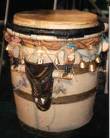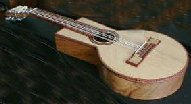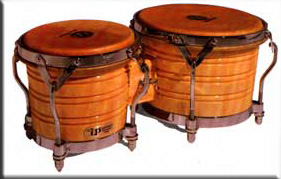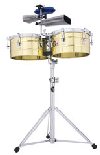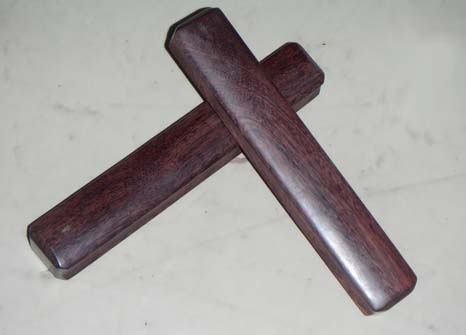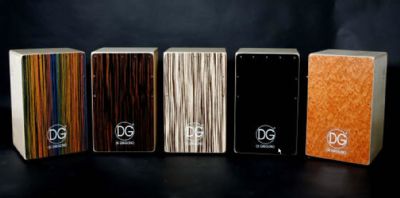|
CARIBBEAN MUSIC & DANCE |
| Home | PUERTO RICO | CUBA | DOMINICAN REPUBLIC |
|
A buleador is a large drum used in La Bomba made of wood and animal skin.
A güiro is a gourd, a hollow, dried shell of a fruit, carved with ridges. It is usually played a stick that is stroked up and down the carved side.
This instrument was adapted by the six-stringed guitar brought to the Caribbean by the Spaniards during colonization. The earliest form had only four strings, consequently it was named cuatro. But the modern form has 5 pairs of strings, each tuned differently. The cuarto was used in La Plena and is still currently used in many form of Musíca Latina.
Bongos are drums made from wood and animal skins. These drums were first used in La Plena and are still currently used in many form of Musíca Latina.
Congos are a longer form of bongos and are also made from wood and animal skin. These drums are still currently used in many form of Latin music, such as la plena, rumba, salsa, and mambo. The names of the drums differ by size of the drumheads, which includes the supertumba, tumba, conga, quito, quinto, and ricardo.
Two drums mounted on a stand. The shells are usually made from some kind of metal. Above the drums, a Timbalero, one who plays the Timbales, will have one or two cowbells and a wood block. Timbales are played with two sticks.
Panderetas are short drums that resemble what is now known as tamberines. These were used in La Plena.
Claves and palitos are a pair of short pieces of wood struck to produce a clicking rhythm.
Cájones are boxes that Cubans used to sit on and create rhythms. In the past they used various objects and surfaces that can be found in the household that was available.
|
|
|
